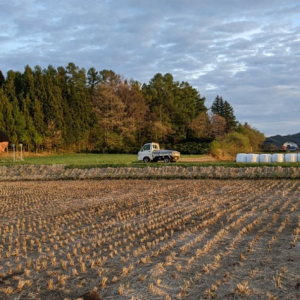
Rewriting the Rules of Sake, with Doburoku (Part 1)
May. 16. 2022 writer


A visit to the humble pioneer shaking the foundation of both doburoku and sake-making, reminding us what’s truly important in the process
– Part 1 of this series can be read here–
“On June 23 about 18 years ago – I remember the date because it was my birthday – a guest I was serving at the minshuku happened to be a respected toji visiting from Niigata.”
Yotaro Sasaki, the one-man-band responsible for Tono Doburoku as well as Tonoya Yo, the influential gastronomy experience and accommodation gathering international attention in the small country village of Tono in northeastern Japan, is reminiscing. He’s recalling a pivotal experience that led to his own sake epiphany.
“He basically tore my work apart; he pulled me aside and said, ‘You can’t be serving this stuff. What you’re making and what I’m making come from the same place – water, rice and koji. You have a responsibility to do better.’ I remember him asking me, ‘You smoke, don’t you?’ It was like he was able to see through everything just by tasting my doburoku. Needless to say, I quit smoking that day,” Sasaki says.
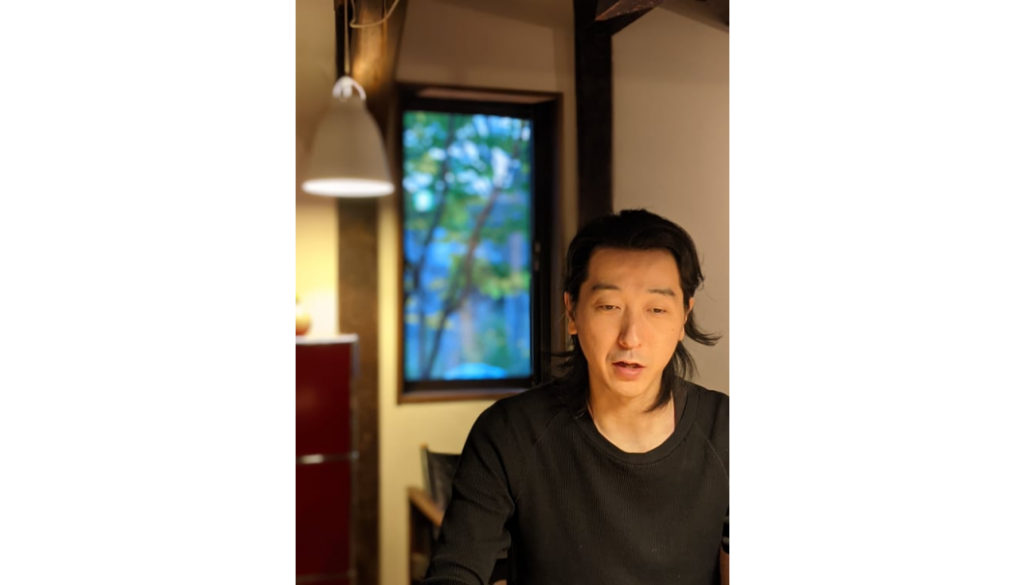
Left with nowhere else to turn and knowing he needed to find a brewery that would not only take him on as an apprentice, but also help him achieve what he had set out to prove with his doburoku, Sasaki, through a series of chance encounters and eager introductions, landed himself a position at Kubo Honke in Nara, the kimoto brewing-style artisans and torch-bearers for what’s often referred to as ‘full fermentation’ sake.
“Even though they’re masters in the production of kimoto-style sake, that’s actually not what I went to learn,” explains Sasaki. “I just wanted two fundamentals – sokujo-style starter preparation, since that was what I knew I could consistently replicate, and koji making. I felt that getting those right was going to provide [me with] the necessary foundation”.
But almost immediately, Sasaki’s definition of ‘fundamentals’ went out the window.
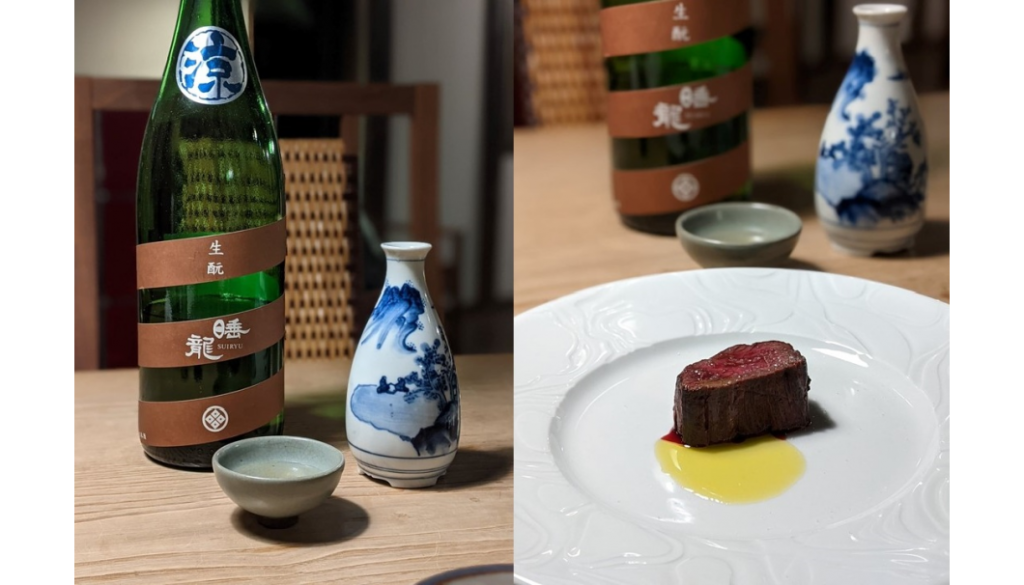
“Meeting [the toji] Kato-san completely transformed how I thought about what it was I ought to be prioritizing in the brewery. The technical foundation I went searching for was important, but I realized that there’s a precursor to that, which is going to determine whether or not it’s even possible to actually get the technical part right.”
“Kato-san can come across as pretty intimidating, but spending time with him in the brewery you realize that his masterful degree of skill and sensibility comes from someplace outside of a strictly technical approach.”
Sasaki’s voice indicates a clear respect, if not reverence. “The way he engages in every part of the brewing process, down to the seemingly most insignificant detail, is a sight to behold. I don’t have the words for it. He’s simply an inspiring human being. Working with him I caught a glimpse of what I had been missing and what could never be taught at a brewing academy.”
When it comes to refining a technical pursuits, the concept of “full fermentation sake,” or as the folks at Kubo Honke refer to it – “perfect fermentation sake” – is clearly the brewery’s North Star. It’s incredibly vague terminology that’s just begging for scrutiny, however that single shared vocabulary somehow manages not only to allow for communication between Sasaki and Kubo Honke, but is also sufficient for the brewery to assess whether or not what they’ve created achieves this seemingly ambiguous benchmark from a technical standpoint.
“Particularly when it comes to doburoku, when we can’t separate the liquid from the rice solids, achieving that full fermentation is critical in order to produce something that’s a complete and true expression of the rice, and that is also able to satisfy as a beverage in the same way [that sake can],” asserts Sasaki. “[Kubo Honke’s] Kimoto no Dobu is brewed envisioning what it will become at least three years down the road. For their standard Kimoto Junmai, they’re thinking at least 10 years into the future.”
Listening to Sasaki, it’s clear that this concept of “full fermentation” is something that’s enacted in the brewery, but that the realization of it extends to the far reaches of both ends of the process, long before and after there’s any actual fermentation taking place.
“I mature all of the rice that we use in brewing for an average of two years prior to actually using it in the brewery,” mentions Sasaki. “It’s critical in order to achieve the quality of fermentation and flavor that I’m looking for.”
And just like that, he once again nonchalantly introduces concepts fundamental to his growing and brewing practices that toss conventional wisdom to the wind.
For those familiar with the world of sake, Sasaki’s work is something of an enigma. It’s both the quality and mystery of his doburoku that lend it its allure. But for the casual epicurean, it’s his culinary dedication – and his accompanying fermentation and maturation philosophies – that have made Tonoya Yo a gastronomic destination.
Tonoya Yo’s accommodations are minimal, yet cozy, structured with an attention to detail rivaled only by Sasaki’s brewing. With the brewer now preoccupied in the kitchen, the evening’s dining experience – along with accompanying doburoku – becomes another means through which Sasaki is able to drive home the core message of his work.
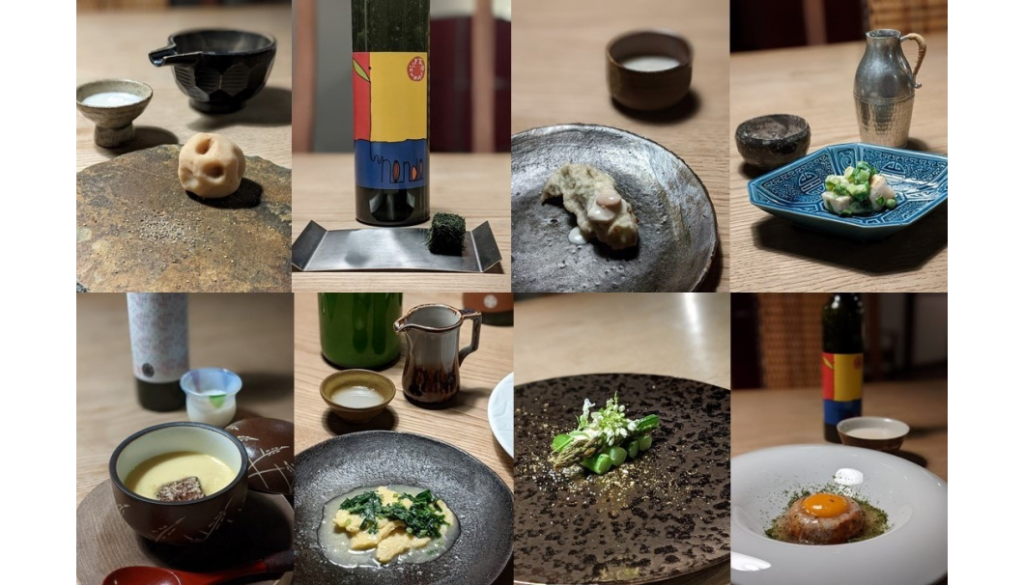
As with his doburoku, Sasaki’s food pushes the diner to ask more questions than it does provide simple answers. As one might expect, seasonality is a given. However, as with his brewing, maturation and fermentation are indispensable components of Sasaki’s creation process. The dishes on offer during any given visit aren’t merely a product of that day, but the culmination of weeks, months, or even years of planning and preparation.
For Sasaki, the definition of “seasonal” naturally requires everything be harvested in its ideal state; often meaning local vegetables and wild herbs picked or delivered fresh that day, but it extends to also include an array of ferments that he’s prepared and has deemed to be ready for use on a given day. By mapping the power of fermentation onto the definition of “in season,” Sasaki becomes an alchemist able to harness the power of time.
Maybe that’s all part of the perfect fermentation.
It’s no surprise that Sasaki’s work has lured aspiring brewers to Tono to work and apprentice alongside him, with the most ambitious going on to establish their own brewing operations that borrow heavily from the insight and experience he’s gained over the past 20 years.
According to Sasaki, it took him about 12 years to get his doburoku to a state where he felt confident in his offerings. Yet, considering all that Japan is in true danger of losing – from its rice farmers and fields, to its sake breweries, and all of their accompanying craft, culture and traditions – Sasaki wants to help expedite the learning process for the next generation that might see doburoku and beverages brewed from rice as a possible solution and desirable form of livelihood.
“From a technical standpoint, at the beginning making good koji [for brewing doburoku] is probably the biggest hurdle,” he explains. “I always emphasize to young brewers looking to start their own thing that when you’re starting a brewery from scratch, particularly if you’re taking on the agricultural component as well, there’s just far too much to manage to think you can do it all to a reasonable standard from the get-go. I often encourage new breweries to think about outsourcing their koji making to a brewery or koji maker with the skill and means to make something reliable right now. Trying to do everything [by themselves] straight away isn’t necessarily the best approach. Brewing quality doburoku is a consideration for the future of Japan’s brewing culture and traditions. Supporting someone with the craft of making koji through your operation and putting in the time to learn and hone your craft before taking it on yourself is both commendable and smart.”
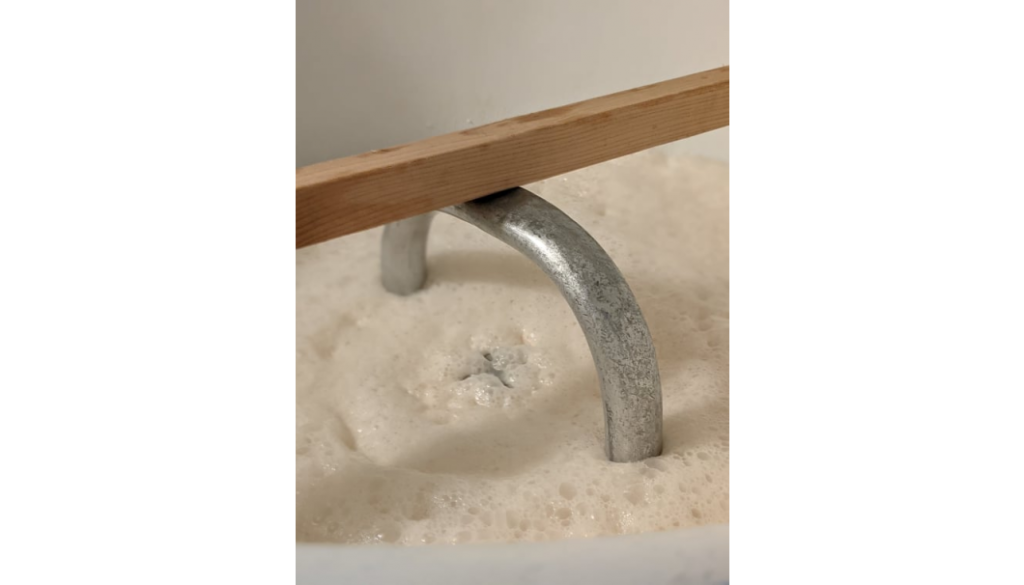
Sasaki’s desire to help new startups be successful early on has also influenced the kinds of sake he’s making, or more accurately, returning to making, today.
“I’ve recently started making a pasteurized sokujo-style doburoku for the first time in about 16 years. There’s a need for knowing how to make that kind of product well,” he states. “Learning to make a great kimoto takes a long time. New brewing startups need to have good product that can sustain their business from the outset, so most start by making products in either the sokujo or mizumoto-style.
“Even though kimoto and mizumoto make up nearly all of my own production nowadays, whenever I work with rice from a new farmer or a new field, I first always brew a batch of sokujo. That style of brewing is actually where my roots are so I use it to calibrate. I feel that’s a skill I can use to support these new brewers and breweries develop a stable, quality product that will contribute to the long-term sustainability of their business. I realized that I need to continue brewing it so that I can continue teaching it.”
Sustainability is what’s pushing the next evolution of both Sasaki’s business, as well as his brewing. He recently built a new brewery right across from Tonoya Yo that he began brewing in from the autumn of 2021. The goal here isn’t merely to make more doburoku from more local rice. He’s also developed a new brewing process that makes use of every single rice grain in its entirety – even after it’s been milled apart.
“Even though you can brew sake from unpolished brown rice, it’s incredibly challenging to thoroughly break down the rice in the fermentation. Even if you do a reasonably good job, doing it in a way that results in consistently good sake is still a difficult thing to achieve.”
Sasaki continues, “So what I set out to do was, as opposed to trying to brew with brown rice, instead I developed a means of creating a brand new, entirely rice-based fermented drink that uses rice, koji rice, and also the rice bran that was milled off the rice, most of which ends up getting tossed because there just aren’t enough feasible applications [for it].”
Introducing an entirely new raw material as part of an entirely new sake or doburoku brewing process – not to mention one with zero precedent – comes with a wealth of logistical hurdles, not to mention the headache of having to get approval from the local health department, often known for its “don’t rock the boat” approach to new ideas.
“It’s strange,” he says, “I was bracing myself for years of pushback and endless paperwork, but when I drew up my recipe and submitted it for approval, it got cleared straight away. I was shocked. Everything else got expedited as a result.”
Sasaki recently completed a successful crowdfunding campaign to the tune of nearly six million yen (about $50,000 USD) in support of the new brewery, with the primary goal (and associated returns) being the realization of his “uniquely Japanese sake-like beverage” (since it can’t technically be called “sake”).
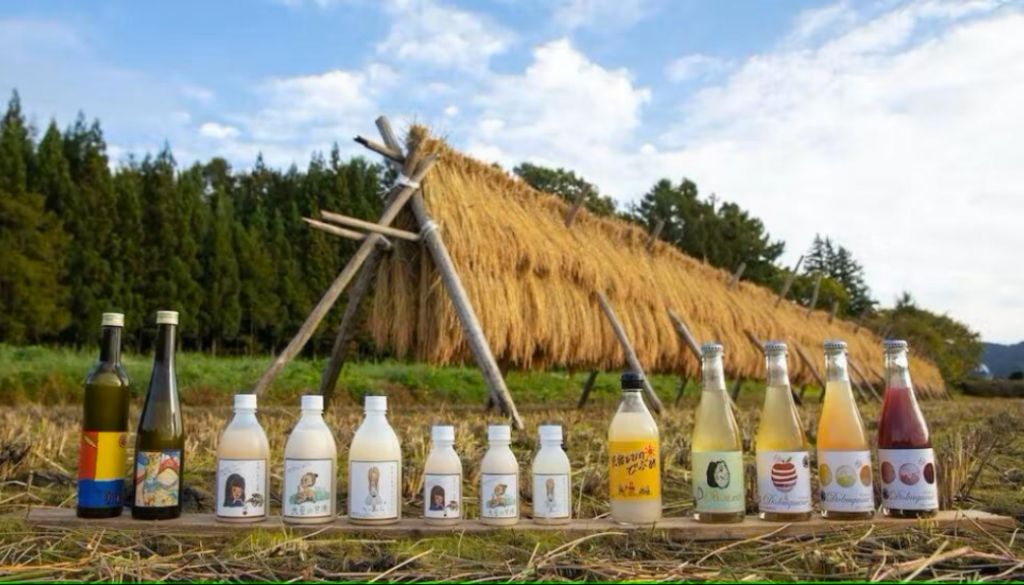
“We’ve developed a process where not a single bit of rice goes to waste,” he exclaims. “It’s something that I hope will help drive a new standard of quality, not just in terms of sustainability, but also in terms of Japan’s rice growing and brewing culture.”
If successful, he sees it as a model that he can replicate in rice-growing regions throughout Japan. “Rice is at the very foundation of [Japan’s] food and brewing culture. If we’re going to shift away from being a culture that eats rice, we’ll turn it into one that drinks it.”
But he can’t do it alone. Now that more and more aspiring brewers are coming and going, and now that he has a small dedicated crew to help him pursue his vision, has Sasaki’s approach changed at all now that he’s not the only one influencing what comes out of the brewery?
“I realized quickly that I’m really bad at teaching. Working with people is way harder than trying to work with invisible microbes or cultivate a living crop like rice,” he laments, chuckling. “But,” he says, “I realized that if you commit to it, you can achieve a level of quality that you could never accomplish as an individual. You’re able to see further and reach deeper.”
“Having rethought the entire process and what actual ‘good rice’ means from the ground up – from the soil to the rice, from the raw materials to their handling, and then of course the actual production of the doburoku itself – I’ve proven there’s [hardly] any need to mill the rice,” Sasaki says.
“The days where the excessively high polishing rate being seen as a value or luxury indicator are long behind us, or at least they ought to be. If we can’t let go of that and center our values around processes that are more natural, local, and sustainable, without a doubt it will all disappear before we even realize what happened.”
Japan may be an island, but it’s equally vulnerable to buckling under the global value structures that it has embedded itself within as the landlocked nations that it leverages for its economic stability. According to Sasaki, Japan is going to have to double down on thinking about long-term sustainability closer to home.
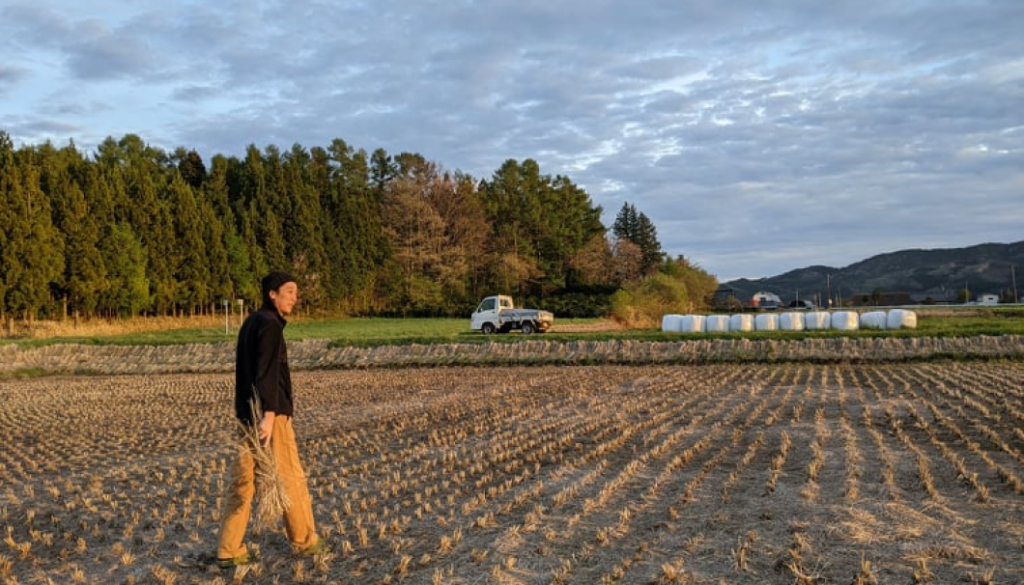
“In the global landscape, other countries and the systems they have in place to support brewing not only have far more financial power, but the values that they are reconfiguring toward also start from organic. Japan has barely scratched the surface there. For Japan, organics are an exception, whereas for the rest of much of the world it’s rapidly become the starting point and accepted standard. Our future depends upon our ability to commit to that sort of quality, and then go beyond.”
Sasaki can speak from experience, as he’s gone out of the way to see all of the permutations through to their logical conclusion right at home, with his own hands, on his own land. Very few brewers can make judgements based on similar experiences.
“When other brewers come to see what I’m doing I always plead with them to just commit to at least one field [of rice] and one batch of sake that’s truly respectful of the local resources that they’re dependent on,” he emphasizes earnestly. “That’s the only surefire way to truly convince anyone; by getting them to have the experience for themselves. If they do it, they get it. They have to. Without realigning our values there’s no future for the product or the culture of sake or sake-making, period. Our future depends on it.”
When it comes to Sasaki’s approach to exporting, he’s grateful to those from around the world that have found value and promise in what he’s creating, one of the earliest being Pablo Alomar Salvioni, who has since taken Sasaki’s doburoku and helped make it a staple in the beverage programs at several of Spain’s most illustrious dining establishments. But at the same time, Sasaki isn’t proactively seeking export opportunities. His focus is someplace closer to home.
“Making sake merely for the purpose of making sake misses the point of the entire thing,” he asserts. “The motivation for even being in this business in the first place should be to preserve the breweries, brewing traditions and craftsmanship that’s been cultivated here in Japan. To be entirely honest, I have no interest in making sake where the international market is the driving force behind it. They’ve just introduced a brewing license that you can now apply for as long as the sake that you produce is only sold as a strictly export-only product. As a maker I don’t get the appeal and I think it’s a completely backwards way of thinking.”
Several months after SAKETIMES initially spoke with Sasaki, a second visit to Tono found him just as he was getting his new brewery operation up and running.
“The facilities are bigger, the scale is larger, and we’re doing it with the same number of people,” he says of the new project with a sigh. “I asked the brewing team the other day how long they think it’s feasible for them to operate like this, and they basically told me that I should feel lucky if they’re still around at the end of the year.” He knows they’re joking, but you can tell he also feels the weight of responsibility for the team supporting him as he charges ahead in an attempt to more fully realize his vision.
“We’ve still got a lot of rice harvesting left to do, so we’re working the brewery and the fields in parallel. The restaurant and lodgings are fully booked through the end of 2021. I’m trying to figure out how to work in this new space with all of this new equipment. We’ve also started trial batches with the rice bran sake that I mentioned before. Everything is happening at once. I guess we’ll manage somehow.”
But despite the sighs and shrugs, Sasaki is thriving on his self-imposed challenges, at least a little.
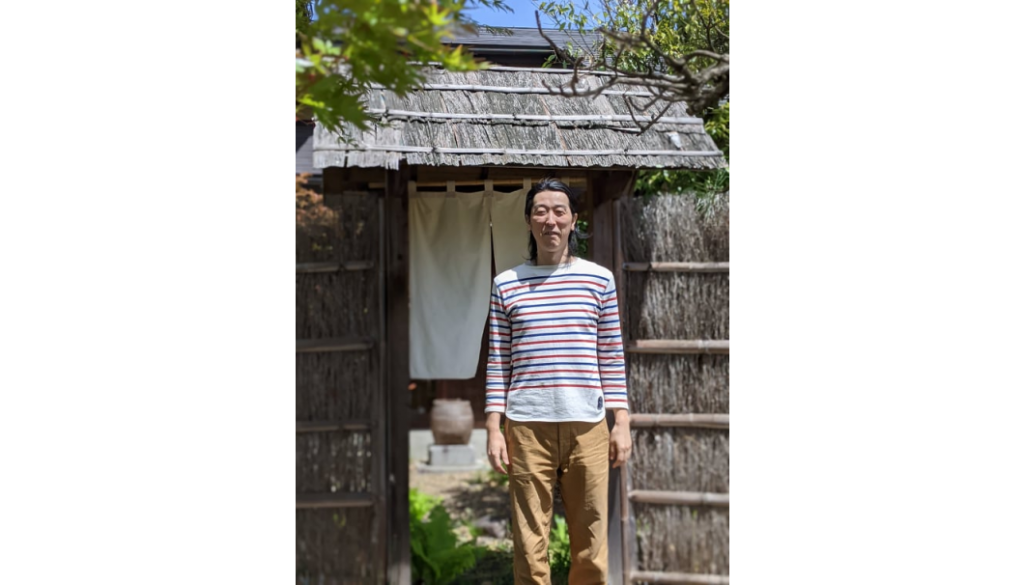
“Maybe to an extent [I enjoy it]. I think that more than anything, whether it’s rice-growing or sake-making, those are worlds where there’s no end to the discovery. The learning and the possibilities are infinite, I think that’s the true appeal. It’s knowing that I’m engaging with something that I could never possibly hope to have all the answers to that I think really drives me.”
Giving it a bit more thought, he adds, “Had I not been born in such a rural place surrounded by rice fields, given my personality I could totally see myself slipping deep into a life of gambling, as well. I guess it’s good I was born where I was,” he laughs.
We’re glad he was born here too. Thanks to that, now we’re all betting on Sasaki.
*If you would like us to send you monthly updates and information, register here.
Comments